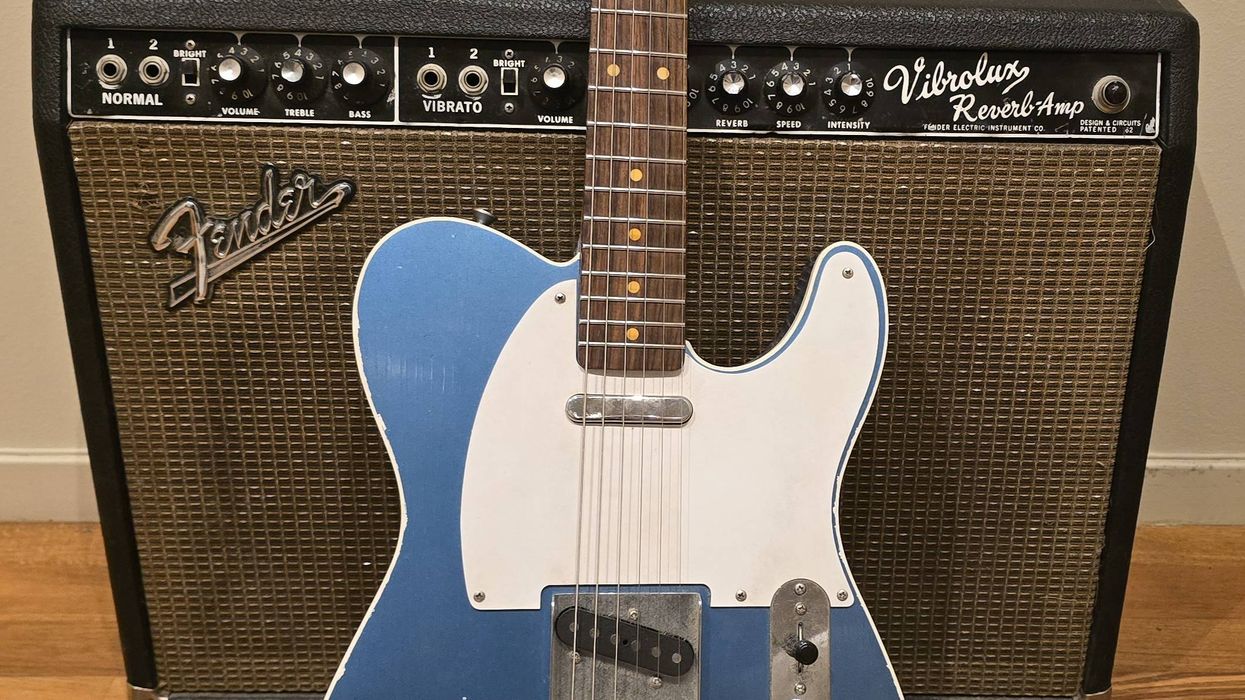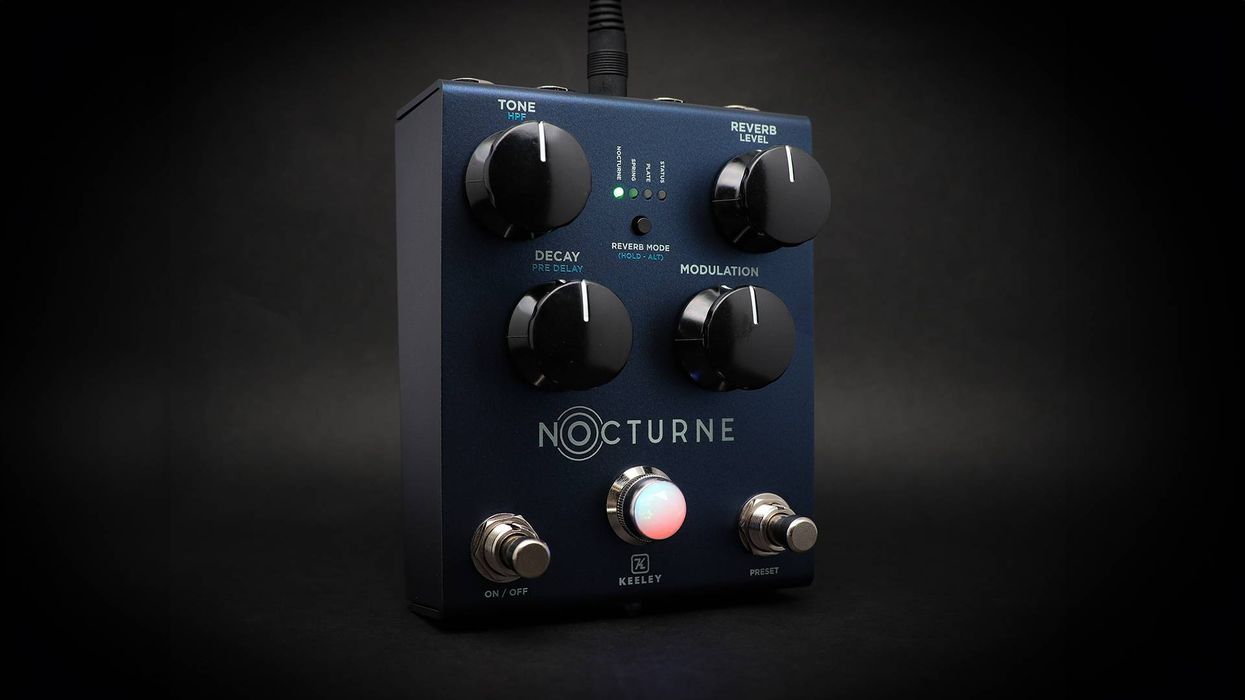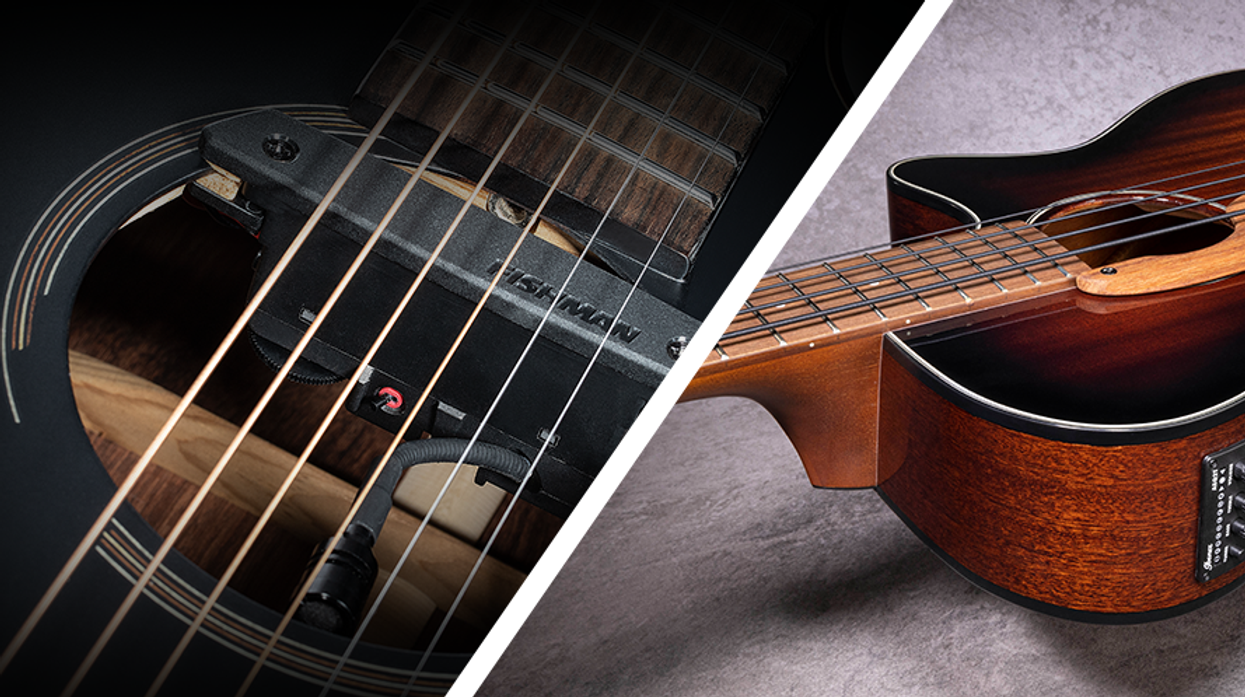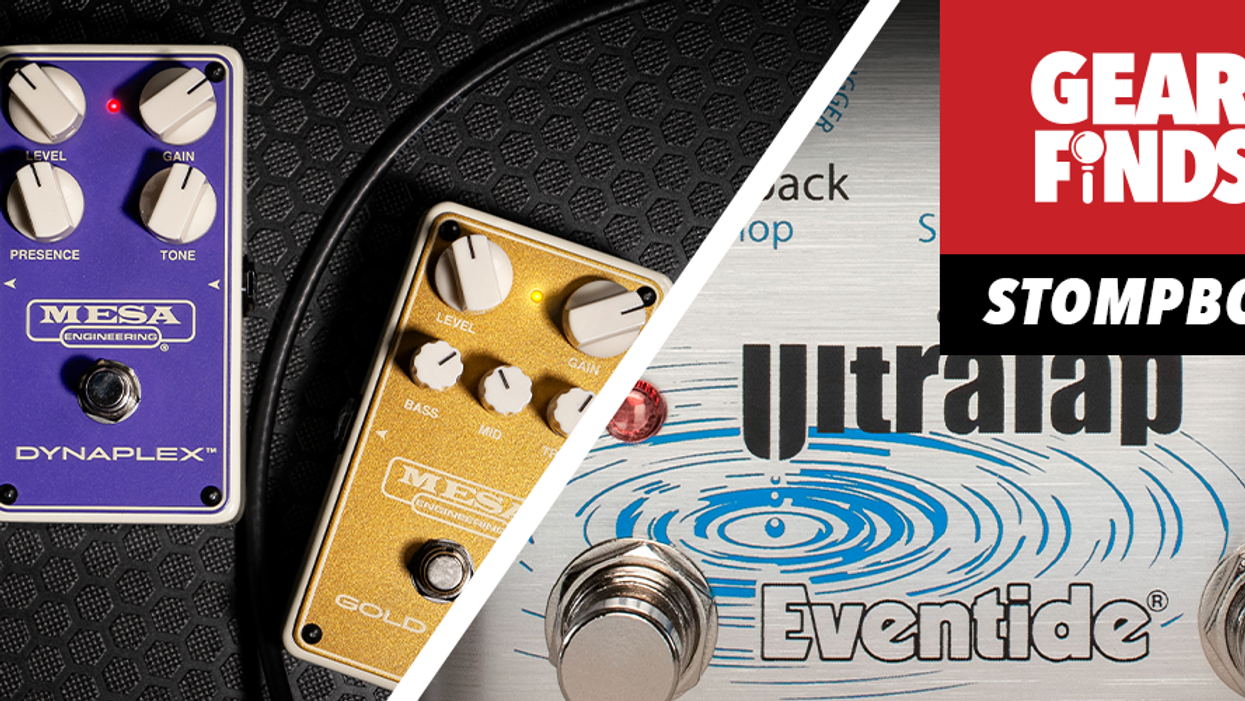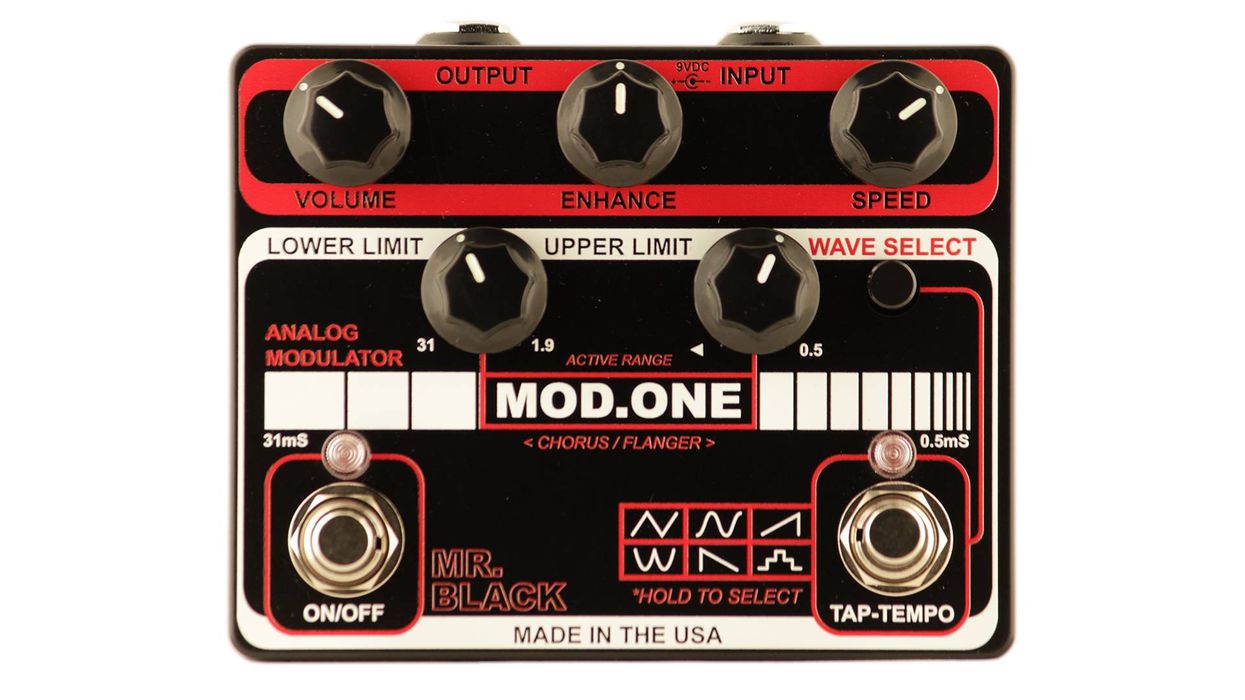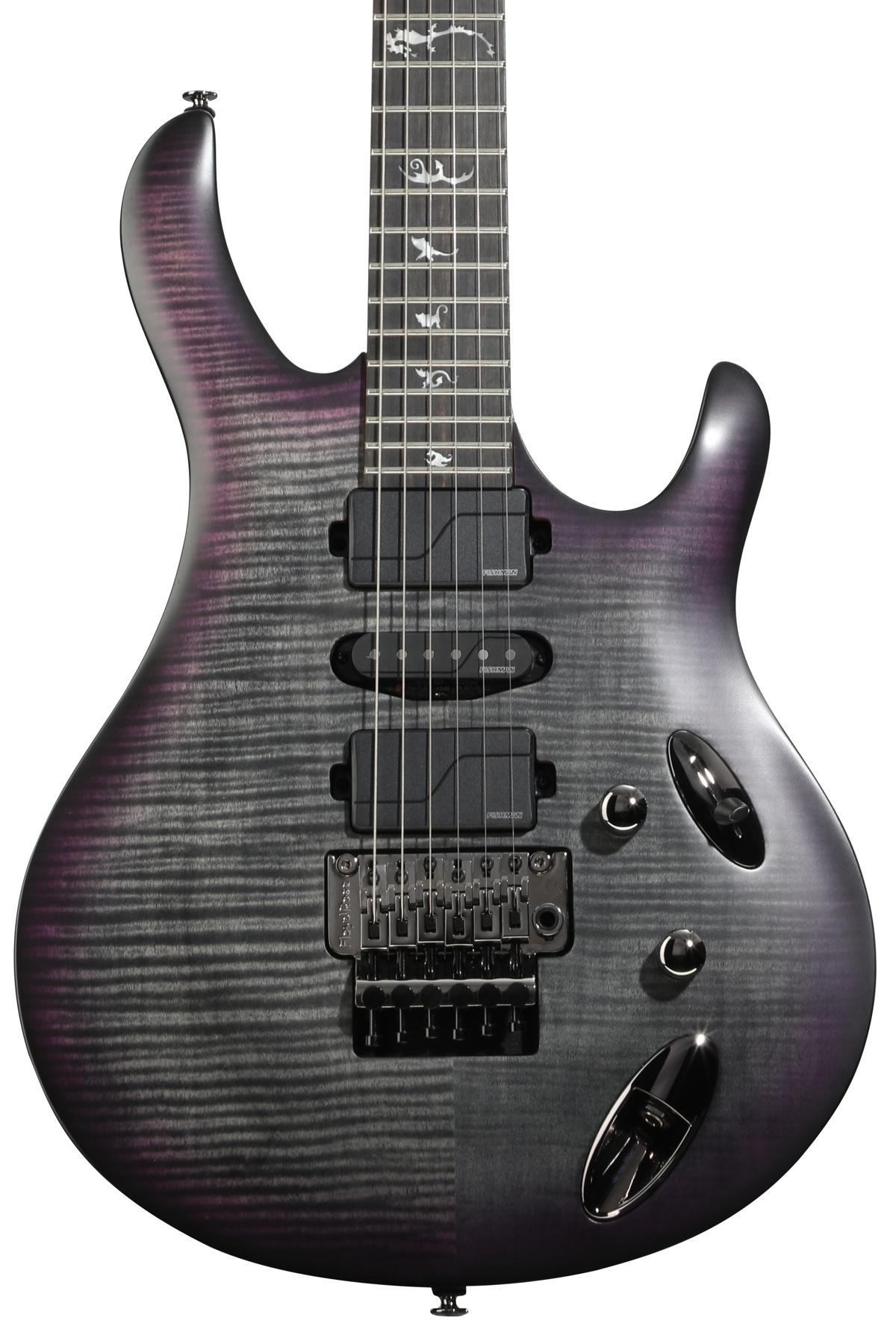From its “blackface” glory years (1963–1967) to the slightly less lusted-after “silverface” years (’68–’82) to the ’65 Reissue-series period (’93–present), the Fender Deluxe Reverb has boasted tonal flexibility and portability that have made it a wonderful all-around combo for everything from country to jazz, rock, experimental music, and beyond. Surprisingly, though hordes of players have long been willing to pay a lot for 50-year-old handwired DRs (unmodified blackfaces in good condition go for upwards of $2,500, while silverfaces go for $1,300 and up), Fender itself hadn’t offered a handwired Deluxe Reverb for more than 35 years—until this past summer’s unveiling of the ’64 Custom Deluxe Reverb.
Boutique’d and Slightly Modded
The ’64 CDR boasts many of the qualities that make vintage DRs so desirable, not least of which are a completely handwired circuit with Mylar-and-tinfoil Astron tone capacitors (just like the originals), and a solid pine cabinet (versus the Reissue series’ birch plywood housings). Tweaks to the original recipe range from the cool but sonically inconsequential (heavier-than-normal vinyl covering, reverb-tank cabling with woven metal sheathing) to those that greatly expand the platform’s utility. Foremost among the latter “mods” is the fact that both channels can access the tube-driven spring reverb and tremolo circuits. (Interestingly, the latter is output-tube-bias as opposed to the photoresistor type found on most Fenders.) Equally impactful, while the bright channel (previously called “vibrato”) features an authentic blackface-voiced preamp, the normal channel has had the capacitors responsible for yielding brighter tones removed—a popular aftermarket mod for those looking for more rounded tones from instruments with pointed treble attack.
A Little Perspective
The ’65 Deluxe Reverb reissue—which has now been around longer than both the original blackface and silverface eras combined—has been a huge hit because it’s reliable, sounds great, and is moderately priced. But its popularity, as well as the scarcity of vintage units, will no doubt skew the perceptions of players who haven’t played a healthy vintage specimen.
For instance, while stock reissues can be pushed into nice grittiness or serious growlage, when run at low volumes they can also function essentially as a low-wattage, half-sized Twin Reverb: With volume below 6 or so, they’re a fairly pristine platform—a wonderful blank slate for pedal junkies. Meanwhile, near max volume, they yield a surprising amount of somewhat modern-sounding distortion.
In contrast, the breakup on well-maintained original DRs tends to begin earlier and proceed more gradually, subtly, and organically—and the amount of breakup is also hugely dependent on where you’ve set the EQ. The headroom difference between eras is partially due to reissues having a slightly higher-wattage power supply than both originals and the ’64 CDR (22 versus 20 watts), but of course there are also many small but cumulatively significant sonic differences between the circuits, both in terms of individual components and construction approach.
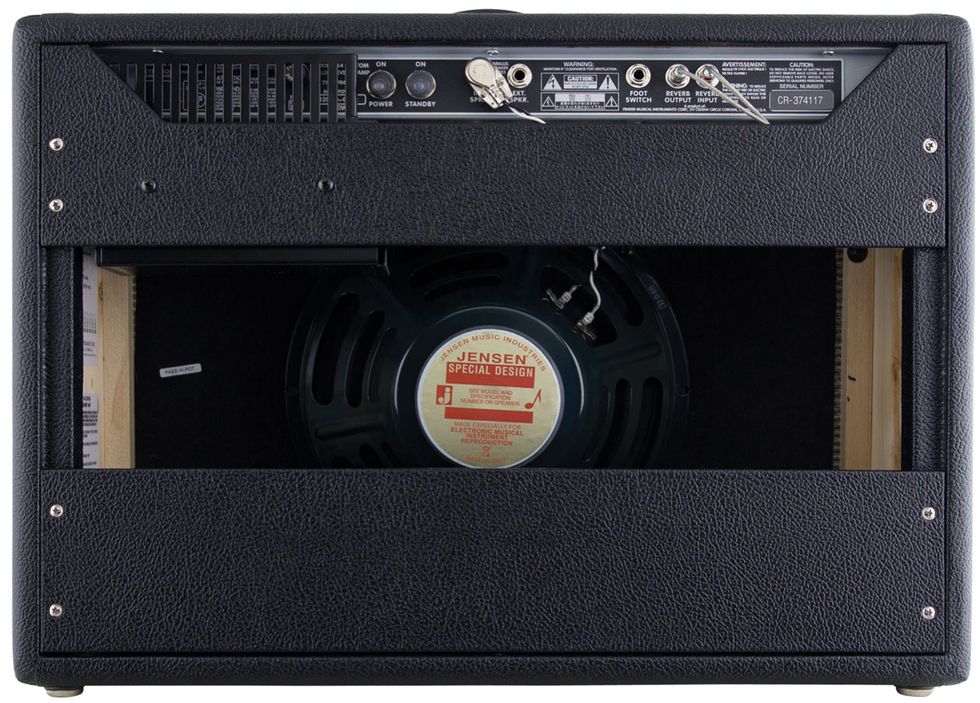
Delux-ing It Up
I tested the CDR with a variety of instruments, including a Tele with Curtis Novak JM-V and Tel-V pickups, a Gibson Les Paul Traditional with ’57 Classics, and a Gretsch Players Edition Broadkaster with Full’Trons. Somewhat surprisingly, most of the time I found myself gravitating to the second input of the normal channel—the one whose preamp departs from vintage spec and has the bright-cap-removal mod. With the beefier-sounding Les Paul, I also enjoyed plugging into the second input of the original-spec bright channel. (Both second inputs have a -6 dB pad.)
This is of note for a couple of reasons: First, guitar culture is so rife with vintage worship that it’s easy to believe stock classics are nothing short of perfect. This has likely led to disappointment for a number of players who’ve scrimped and saved for an oldie, only to find that their other gear and/or playing approach don’t instantly morph into fried gold upon plugging in. My preference for steel picks and pickups with articulate, single-coil-like high end most certainly factored into my opting for the padded second inputs, as well as my view that the blackface-spec’d channel sometimes sounded strident. Other players are bound to have different results with their unique setups. What’s remarkable is that the CDR has something for a host of tastes and approaches—without necessitating extra knobs, sliders, push-pull pots, etc.
Ratings
Pros:
Stellar tones and dynamic response. Reverb and vibrato available on both channels. Normal-channel bright-cap-removal mod greatly expands versatility.
Cons:
Some players might prefer a more dynamic, higher-headroom speaker. Instrument cable didn’t snap firmly into the normal channel’s input 1.
Tones:
Ease of Use:
Build/Design:
Value:
Street:
$2,499
Fender '64 Custom Deluxe Reverb
fender.com
Breakup-wise, the CDR follows the previously mentioned vintage basics—including the dependence on EQ setting. With most guitars I found the best tonal flexibility for medium- to high-volume tones with bass at 5 and treble at 4, though humbuckers usually fared better with higher bass and lower treble settings. Interestingly, the normal channel doesn’t just sound warmer and less trebly than the bright channel at identical settings—it also has more grit, body, and volume. For example, with my Tele I could get pristine clean tones from the bright channel with volume a little under 6, whereas the normal channel became gritty—in a full, gorgeous way—when volume approached 4.
Once you’ve found the right preamp match for your pickups, pushing the volume dials past their clean threshold is a bit like the sonic equivalent of picking a polished granite stone from a riverbed and slowly turning it over to reveal the grittier underside that’s been protected from the overhead rush of water: Like the stone long submerged, the grit never becomes sharp or displeasingly jagged—even with volume at max, where you get corpulent, lardaceous distortion. That said, humbucker players wanting to play in the volume knobs’ nether regions may prefer a speaker with higher headroom and tauter response.
I felt the CDR was best matched to my Tele, serving up astonishingly iconic twang and shimmer. But rockabilly riffing and staccato surf maneuvers on the Gretsch also sounded flat-out incredible. The reverb goes from subtle to lusciously deep, and the trem throb is deliciously captivating—however, at high volumes it can sometimes be difficult to discern the undulations amidst the din, even with high intensity settings. Meanwhile, the Les Paul conjured snarl and beef great for classic and blues rock, though at times it was difficult to conjure a balance that yielded a full range of sounds from the more powerful pickups without sacrificing headroom, volume, or clarity.
With either channel, pushing EQ knobs past about 5 also adds more gain to the overall sound, especially on the bass control. The effect is especially noticeable on the normal channel, where setting volume anywhere from 6 to 8 sent my Tele to seventh heaven and enabled me to go from violent chord slashes that showered the room in harmonic sparks to careful caresses that elicited seductive clean notes absolutely alive with body and depth.
The Verdict
Fender’s ’64 Custom Deluxe Reverb is both long overdue and a smashing success, nailing the magical paradox players seek in vintage amps: Fantastic touch sensitivity married to an addicting, lived-in feel. Inveterate tweakers are bound to still experiment with things like tube and speaker swaps, depending on their needs, but in all the CDR delivers both vintage-vibed goods and sensible, no-brainer modifications in spades. It’s on the pricey side, but when you factor in how much it would cost to have a tech (blasphemously) perform its two primary circuit mods on a vintage unit, you quickly realize it’s a pretty damn good deal.
Watch the Review Demo:









![Rig Rundown: Russian Circles’ Mike Sullivan [2025]](https://www.premierguitar.com/media-library/youtube.jpg?id=62303631&width=1245&height=700&quality=70&coordinates=0%2C0%2C0%2C0)







